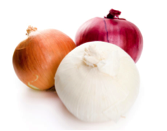
The Dirty Dozen & The Clean 15
This was one of the very first pages that I published on my blog back when it was called “KaceyCooks”. I wanted you guys to know about this page so I’m sharing it as a post. If you’re new to Real Food, you may be at that stage in your journey where you’re feeling a little dazed and confused. Fret not. As I’ve stated before making 1-2 changes and perfecting those before moving onto another 1-2 will make things a lot less stressful and you’ll be able to achieve all your Real Food goals.
I started out about 7 years ago avoiding the low-fat, no-fat, reduced-fat craze, and then avoiding HFCS like the plague. It wasn’t until recently that I made serious changes and even at that, we’re doing what we can a little at a time. There are just too many things to do and if you try to accomplish going organic, eating only grass fed/pastured meats & poultry, avoiding dozens of toxic ingredients, baking your own bread, making kefir and kombucha (fermenting), avoiding GMOs, eliminating processed foods from your diet, avoiding MSG, wearing only blue socks on Friday’s… oh wait. That’s my thing. Anyway- there’s too much to tackle at once, so take it slow.
This list is a great place to start, especially if you are on a tight budget and can’t quite work in organic, grass fed dairy and meats. It highlights the fresh produce items that you really should consider purchasing organic and the others you can purchase conventional if you’d like. Baby steps people… just like in the movie What About Bob?.
The Dirty Dozen & The Clean 15
This is quite possibly one of the most important lists that you could memorize when it comes to eliminating GMOs and/or harmful toxins from your diet. An amazing organization called the Environmental Working Group (which is an “organization of scientists, researchers and policymakers”), developed a list of which common produce items have the highest amounts of pesticides and other harmful chemicals.
They discovered that by switching to organic produce for the foods listed on “The Dirty Dozen” list can “reduce the amount of toxins you consume on a daily basis by as much as 80 percent.” I’m not sure about you, but I’m all for not being a walking chemical factory. Americans already consume 6-9 pounds per year of chemicals. That’s not including what we absorb through our skin. That’s something kind of sobering to think about, isn’t it?
In addition to “The Dirty Dozen” list, the EWG put together another list called “The Clean 15″. This list is meant to help you, the consumer, know when to buy organic and when it is unnecessary. These lists were compiled using data from the United States Department of Agriculture on the amount of pesticide residue found in non-organic fruits and vegetables after they had been washed. Click “here” to learn more about the EWG and their newly published Shopping Guide.
According to the EWG: “The fruits and vegetables on “The Dirty Dozen” list, when conventionally grown, tested positive for at least 47 different chemicals, with some testing positive for as many as 67. For produce on the “dirty” list, you should definitely go organic — unless you relish the idea of consuming a chemical cocktail.” [According to little ol’ me- I generally prefer the taste of organic produce so unless it’s an emergency situation, I just always buy organic. After switching over to an almost fully organic and non-GMO diet, I noticed that food just started tasting better, and my veggies tasted veggier and my fruits tasted fruiter. TSM noticed the same thing as well regarding taste. There you have it- I just made up two new words! And you thought you were only going to get recipes and knowledge from me.]
“The Dirty Dozen” list includes: (This means buy these items ORGANIC)
- Celery

- Peaches

- Strawberries

- Apples

- Domestic blueberries

- Nectarines

- Sweet bell peppers

- Spinach, Kale & Collard Greens


- Cherries

“The Clean 15” list includes: (This means you can purchase NON-ORGANIC/Conventional versions of this produce if you so desire)
- Onions

- Avocados

- Sweet corn

- Pineapples

- Mango

- Sweet peas

- Asparagus

- Kiwi fruit

- Cabbage

- Eggplant

- Cantaloupe

- Watermelon

- Grapefruit

- Sweet potatoes

- Sweet onions

**information for this page was gathered from The Environmental Working Group’s website.
Here and also here. **
This page written by: Real Food Girl: Unmodified










2 Comments
Trisha
This list is great! I’ve been switching over to whole and raw foods, learning about pesticides, thinking if I have to buy all this stuff organic, its gonna get expensive! At least there are some things left at the grocery store! Thanks for posting this.
Real Food Girl
Trisha, seek out local farmers’ markets in your area, and see if you have any local co-ops. You’ll save more money getting your organic items through them. I refuse to buy organic items at our regular grocery store because they are priced 25-50% higher than the other whole/real food type grocers where I shop. I was told by the store manager at our regular local grocery store that organic companies won’t work directly with conventional grocers so everything has to go though a middleman which is why they price things so high! Example, it’s $8.00 for 16 ounces of organic canola oil at my regular grocery store and $3.99 for 33.8 ounces at Trader Joe’s… Best of luck. Glad you found this list helpful!